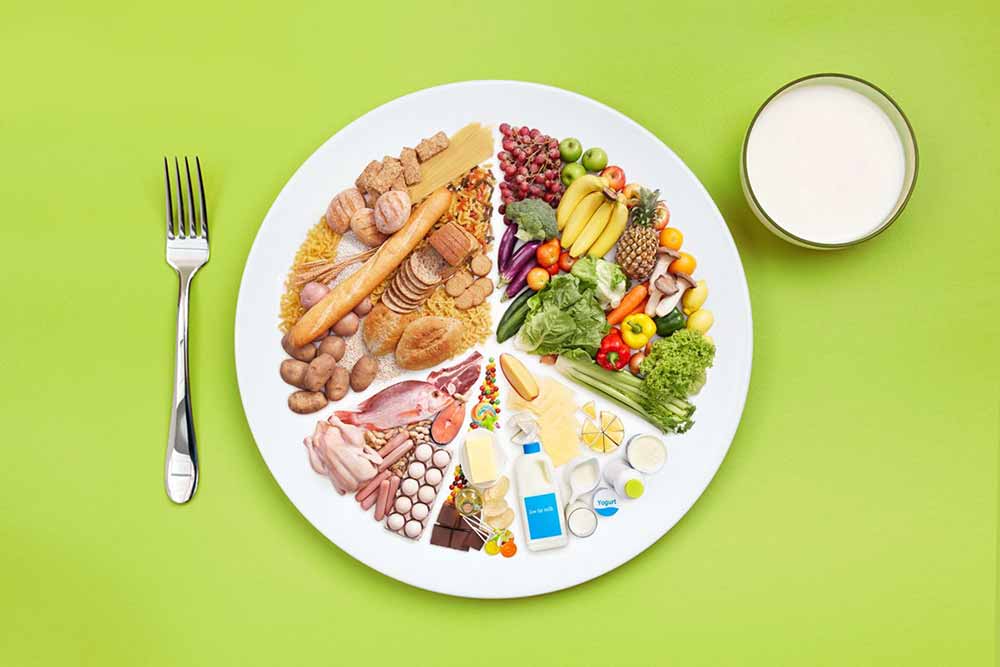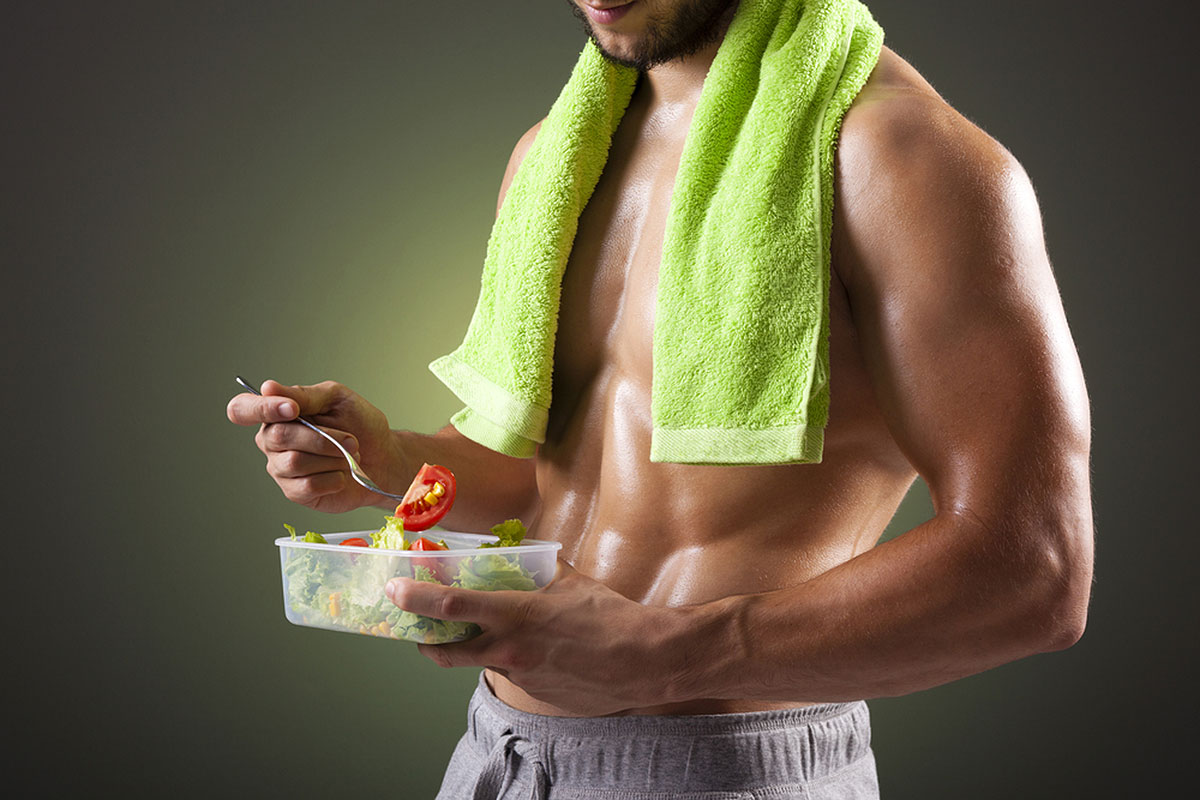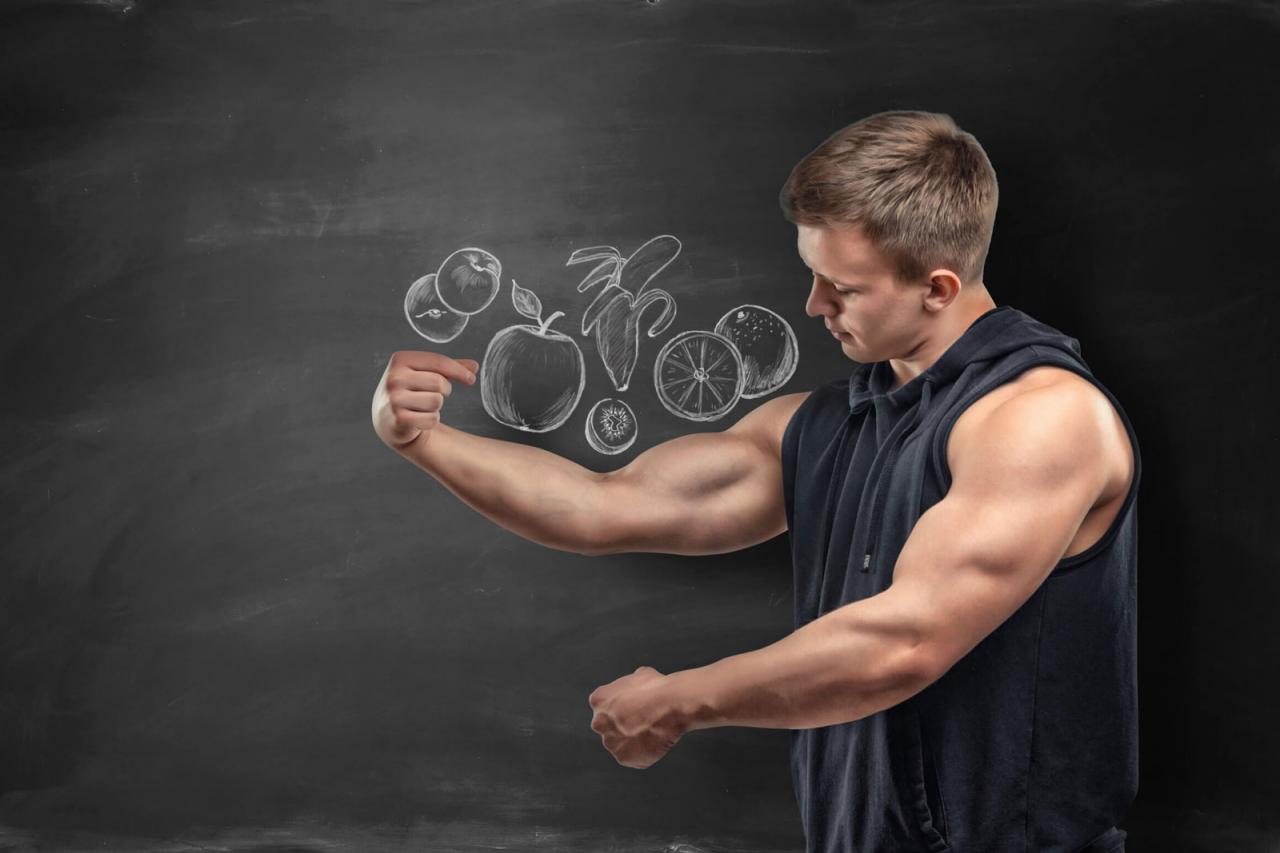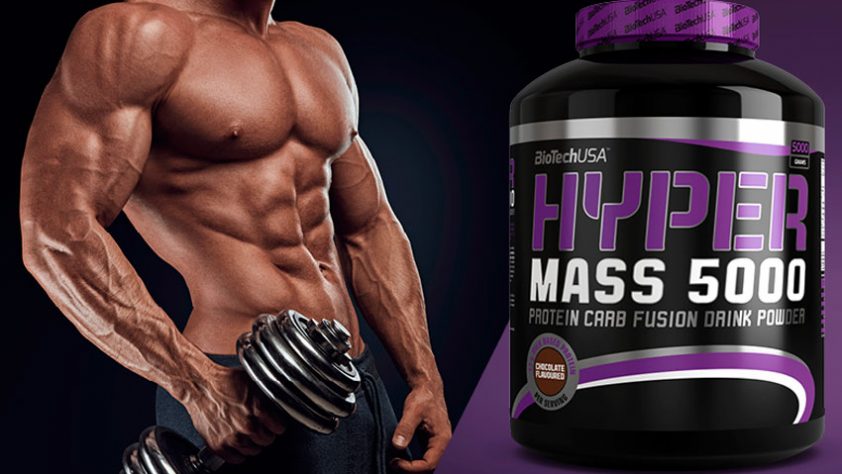Nutrition for muscle mass isn’t just about taking a sports supplement. First of all, additional calories are needed to increase body weight – up to 15-20% of the norm. Men usually need at least 3000 kcal per day for muscle growth, women – about 2500 kcal.
Ultimately, gaining muscle mass means consuming a lot of protein and carbohydrate foods – which is why it is easier to eat at home, where you can change the KBZHU of each serving. Below in the material you will find a meal schedule and a sample menu.
Nutrition for gaining muscle mass

Nutrition for weight gain is eating a high-calorie diet with an emphasis on high amounts of protein and carbohydrates with a low to medium glycemic index. Proteins in this case act as an element for muscle growth, and carbohydrates are a source of energy for training.
In addition, the presence of vitamins and minerals in the diet plays a role – in particular, sufficient amounts of magnesium, zinc and iron, which are necessary for testosterone production. Among other things, a lack of vitamins A, B, C, and D negatively affects post-workout recovery – and weight gain in general.
Note that the bulk diet can be based on common foods that can be bought in any supermarket – for example, eggs, chicken, vegetables and cereals. Research does not support the need for sports nutrition or any specific supplements for muscle growth.
The first step is calculating calories
The reason a weight gain meal is called “hypercaloric” is because it has too many calories. Muscle growth requires an excess of the daily calorie intake by at least 15-20% – that is, a man-athlete 180 cm tall and weighing 70 kg needs at least 2700-3000 kcal daily.
This high calorie count means 5-7 meals a day – which is much easier to do at home. Most often, we are talking about a hearty breakfast, then a second breakfast, a large lunch, an afternoon snack, a snack and a full dinner.
At the same time, the sources of carbohydrates and fats when gaining muscle mass should be as “correct” as possible – otherwise, the excess calorie content of the menu will easily lead to fat gain, and not to muscle growth.
How to gain weight? BZHU norms

When gaining mass, fats should provide about 30-35% of all incoming calories (mainly in the form of vegetable oils), carbohydrates with a low glycemic index – about 50-60%, proteins – 20-25% of the total calorie intake.
In other words, the opinion that protein should be the main menu for gaining muscle mass is only partially true. In fact, increased calories and adequate amounts of the right carbohydrates are much more important for muscle growth.
Protein for muscle growth
Scientific research suggests eating around 1.5-2.5 grams of protein per kilogram of dry body weight is essential for guaranteed weight gain. In other words, for a man weighing 70-75 kg and with 8-10% body fat, 150-190 g of protein per day is enough for muscle growth.
Exceeding this figure (even at the expense of sports protein) will not bring any additional effectiveness – however, in terms of money, calories from meat products are always more expensive than calories from oils, various grains, or even fruits.
Meal Schedule
Meals for gaining muscle mass can be simple and consist of common and inexpensive foods available even to students:
- More of the right carbohydrates in the morning . To keep your muscles working for breakfast, you should eat a substantial amount of carbohydrates – not just bread and jam, but rather oatmeal with moderate amounts of honey or fruit pieces.
- Lunch is the main meal . You should eat the largest amount of carbohydrates, proteins and fats at lunchtime – this minimizes the deposition of excess calories (and without excess calories, muscles simply will not grow) in fat stores, but will help for weight gain.
- In the afternoon – a healthy snack . Refuel with a serving of nuts and dried fruits at around 4pm. If your goal is to gain mass as quickly as possible, fry a three-egg omelet or eat a serving of low-fat cottage cheese with nuts.
- Dinner – light protein foods . The basis of a dinner for a meal should be lean meat (or fish) with as many seasonal vegetables as possible, stewed in vegetable oil (preferably olive oil). The source of carbohydrates should be buckwheat – the basis of an athlete’s nutrition.
Immediately after training, the body needs carbohydrates to replenish the energy expended. Taking a serving of whey protein, while beneficial for muscle growth, will not be as effective for gaining mass as taking a shake of digestible carbohydrates and protein (that is, a gainer).
An example of a menu for gaining mass

// Breakfast:
- A large cup of oatmeal (30-50 g) cooked in skim milk with half a banana , apple and yogurt.
// Lunch:
- Buckwheat porridge with chicken breast fried in olive oil. Pour 100-130 g of dry buckwheat (about half a glass) into a saucepan, add 250-300 ml of water (one and a half cups), salt. Put on fire, bring to a boil, close the lid and simmer for 15 minutes. While the porridge is cooking, fry the chicken breast in a tablespoon of olive oil.
// Post-workout nutrition:
- Large serving of protein (one and a half scoops) and 10-20 g of fast carbs to close the carbohydrate window . Also add 5 g of creatine to your sports shake and take several BCAA capsules before training .
// Second lunch:
- Omelet from three chicken eggs .
// Dinner:
- Vegetable stew with beef and olive oil dressing. Use 200-250 g of various vegetables (zucchini, bell peppers, corn), 100 g of pumpkin or potatoes (preferably sweet potatoes), 50-60 g of buckwheat or durum wheat pasta and 100-150 g of beef.
Weight gain for teens
As a reminder, adolescents under the age of 18 are not recommended exercises that exert a vertical load on the spine – that is, squats and other basic barbell exercises. Since it is difficult to achieve significant muscle growth and mass gain without these exercises, a special sports diet for adolescents is often not required.
However, this does not exclude the importance of avoiding sugars (primarily sweets and soda), semi-finished products and fast food (chips, pizza and French fries). Even if a set of significant muscle mass is not the main goal, the more natural and varied the diet is, the better the adolescent’s body reacts to training and will be able to realize its growth potential.



